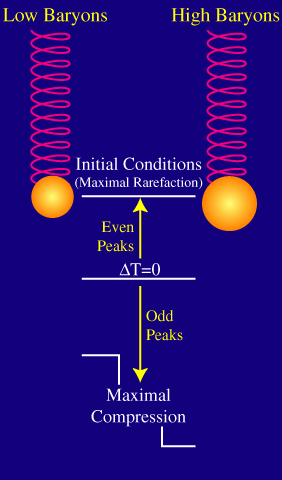

Baryons (or ordinary matter) load down the photon-baryon plasma and add inertial (and gravitational) mass to the oscillating system.
Their effect on the acoustic peaks is easy to understand. Remember what happens when you add mass to a spring and let it fall in the gravitational field of the Earth. With more mass loading the spring, it falls further before pulled back by the spring. On the other hand, it rebounds to the same position it started from.
Since the odd numbered (first, third, fifth...) acoustic peaks are associated with how far the plasma "falls" into gravitational potential wells (how much the plasma compresses), they are enhanced by an increase in the amount of baryons in the universe. The even numbered peaks (second, fourth, sixth) are associated with how far the plasma "rebounds" (how much the plasma rarefies). Thus with the addition of baryons the odd peaks are enhanced over the even peaks. For example, baryons make the first acoustic peak much larger than the second. The more baryons the more the second peak is relatively suppressed.